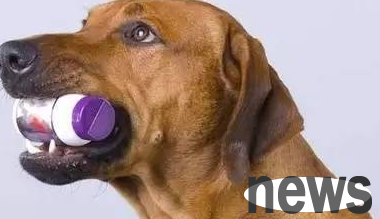Canine urinary incontinence is to urinate unconsciously. This is a common phenomenon in middle-aged and elderly dogs, medium and large dogs, female dogs, sterilized dogs, and obese dogs. Of course, some puppies also experience urinary incontinence w...
Canine urinary incontinence is to urinate unconsciously. This is a common phenomenon in middle-aged and elderly dogs, medium and large dogs, female dogs, sterilized dogs, and obese dogs. Of course, some puppies also experience urinary incontinence when they are excited. So what are the symptoms of urinary incontinence in dogs and how to treat them?

Symptoms of urinary incontinence of dogs
The owner can observe the following conditions of the dog and provide the doctor with a diagnostic basis.
1. First eliminate regional urination (mark).
2. Observe the amount of liquid discharged. If the amount is quite small, it may be vaginal secretions, uterine secretions and prostate secretions.
3. Sometimes, if the dog itself suffers from polyuria (such as diabetes and diabetes insipidus), it can be found that the dog urinates more often, but the amount of urination is still quite large each time.
4. The bladder can be palpated. If the bladder wants to be large, it may be neurologic incontinence.
5. If the dog has urinary incontinence at night or sleeps, it is necessary to suspect that the coordination ability of the urethra itself is abnormal.
Diagnosis methods for urinary incontinence in dogs
1. Blood test: You can understand the changes in blood cells, whether there are abnormalities in the enzymes in the organs, whether there are azotemia and acidemia, etc.
2. Urine test: You can understand whether there are changes in hematuria, bacteriuria and proteinuria. The ammonia content in the urine, the type of the urine residue test, etc. can all assist in the judgment. In addition, other weakness characteristics of urine, such heavy pH, etc., need to be recorded in detail.
3. X-ray test: You can understand whether there are stones or the size of the prostate, and you can also use intravesive radiation agent to assist in diagnosis.

4. Ultrasonic testing: a very important test. Each organ can be examined to evaluate the therapeutic effectiveness of the disease.
Treatment methods for urinary incontinence in dogs
require professional doctors to check, diagnose and treat, determine the cause and give drug treatment.
The phenomenon of urinary incontinence in male dogs is indeed rare, especially the proportion of puppies is much less than that in large dogs. This is a known and certain thing now. Some owners may experience that when winter comes, the dog will pee directly in the nest. At this time, you can first observe the sleeping condition of the dog at home. If peeing occurs unconsciously and the urine is dripping all the time, it is urinary incontinence. However, it is also possible that the dog does not want to move and pee directly when he is awake. This is common in middle-aged and elderly female dogs, especially medium and large and already sterilized female dogs, with a prevalence rate of about 20%.
The condition after treatment
The treatment effect is different for different causes.